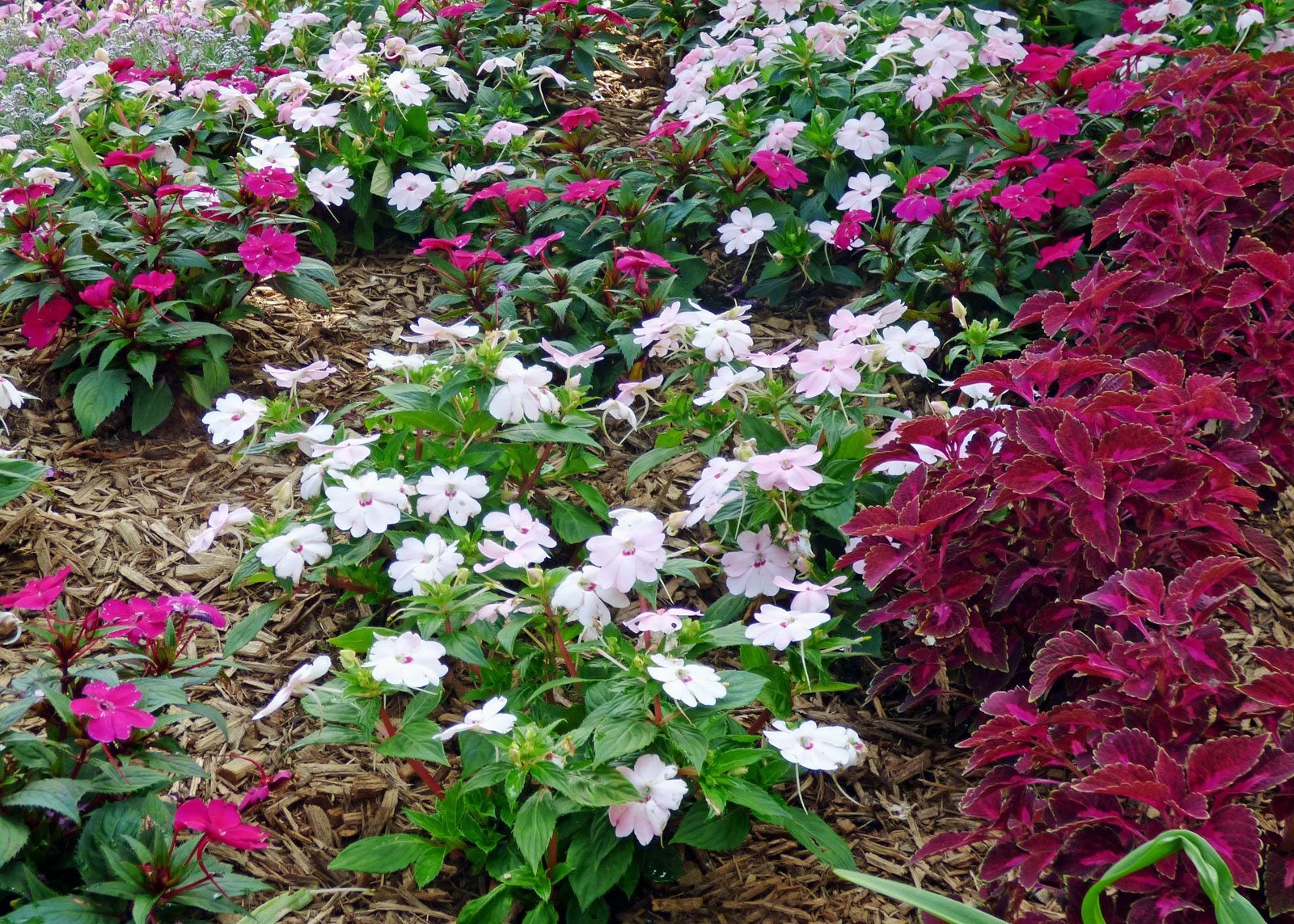What Are Sunpatiens: How To Plant Sunpatiens In Garden Beds


Impatiens, also known as the touch-me-not plant, is a very popular flowering plant suited to garden beds and containers. Native to forest floors, it has to be grown in the shade to avoid being scorched by the sun. Sunpatiens is a relatively new impatiens hybrid that thrives in full sun and hot, humid weather, greatly expanding the area in which gardeners can spread impatiens color. Keep reading to learn more about how to plant sunpatiens and sunpatiens plant care.
What are Sunpatiens Plants?
Sunpatiens is a hybrid bred by the Japanese seed company Sakata. It is a careful combination of wild “traditional” impatiens (from a plant species native to Indonesia) with the larger, heat-loving Impatiens hawkeri, native to New Guinea. The result is a variety of impatiens that thrives in full sun and hot, humid weather, and blooms straight through from spring to autumn. It’s an excellent container and bedding flower for long lasting color. Interestingly, the Indonesian government agreed that Sakata may continue to use “indigenous genetic resources” from their country so more SunPatiens varieties may become available, but they must follow guidelines put in place by the Convention on Biological Diversity (CBD). This essentially ensures the conservation of plant-rich countries, like Indonesia or South Africa.
Sunpatiens Plant Care
Growing sunpatiens plants is very easy and low maintenance. The plants prefer well-draining soil that’s rich in organic material. They grow very well in both containers and garden beds, and they like full sun or partial shade. For the first week or two after planting, they should be watered every day to get them established. After that, they need only moderate watering and can usually be revived from wilting with a good dose of water. Sunpatiens companion plants are any colorful flowering plants that also enjoy full sun. When growing sunpatiens plants, especially if grouping with other plant varieties, it’s important to know how much space you are looking to fill in. Sunpatiens plants come in three size categories: compact, spreading, and vigorous. Compact and spreading plants are both perfect for containers. (Compact plants stay small while the spreading ones fill out a hanging basket or pot spectacularly). Vigorous plants are best for garden beds, as they grow fast and fill out a space with bright color quickly and effectively.
Sign up for the Gardening Know How newsletter today and receive a free copy of our e-book "How to Grow Delicious Tomatoes".

The only child of a horticulturist and an English teacher, Liz Baessler was destined to become a gardening editor. She has been with Gardening Know how since 2015, and a Senior Editor since 2020. She holds a BA in English from Brandeis University and an MA in English from the University of Geneva, Switzerland. After years of gardening in containers and community garden plots, she finally has a backyard of her own, which she is systematically filling with vegetables and flowers.